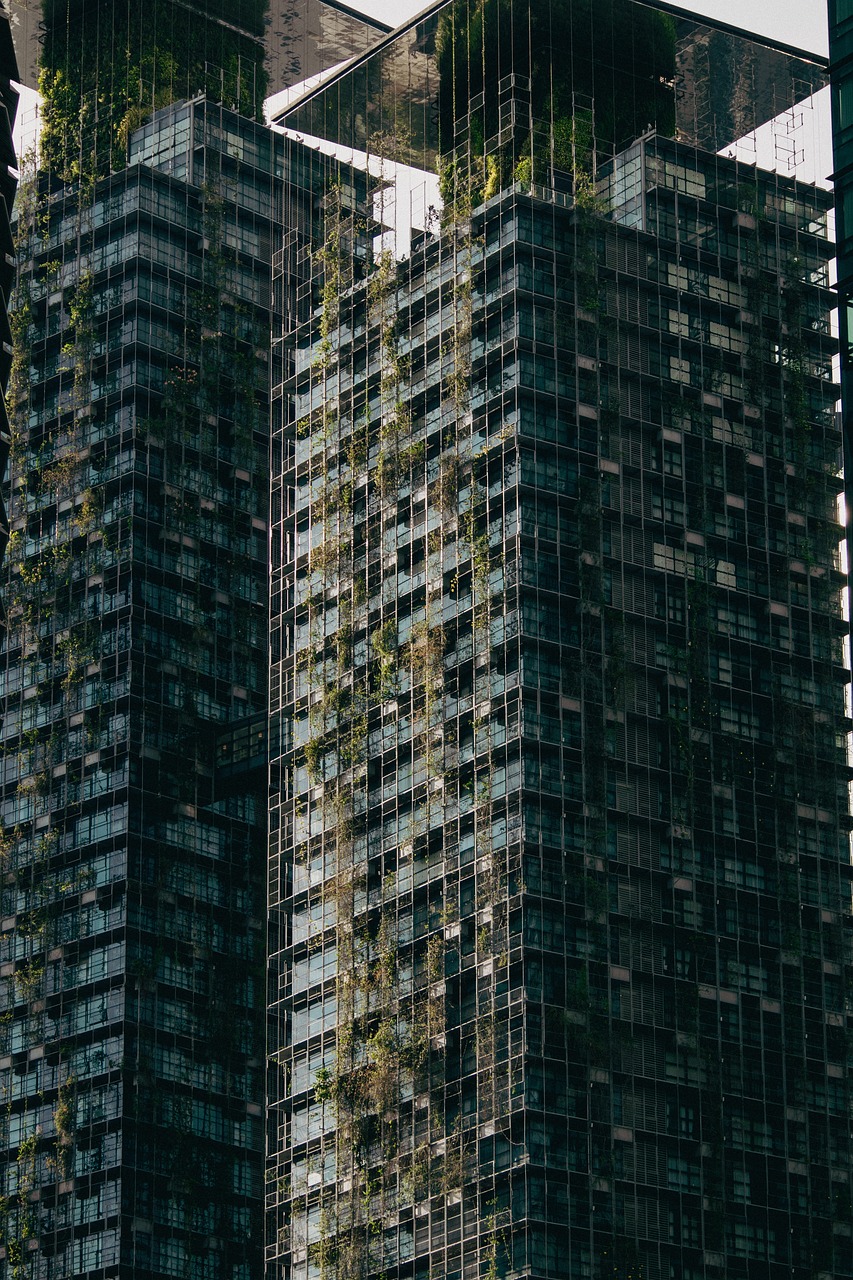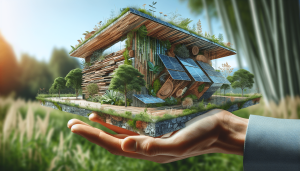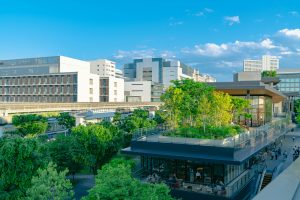In our pursuit of harmonious living with nature, “How Does Sustainable Architecture Promote Biodiversity?” explores the fascinating intersection of eco-friendly building practices and the thriving ecosystems they support. We dive into the innovative designs and thoughtful planning that transform our constructed spaces into vibrant habitats, where flora and fauna coexist with human development. By integrating green roofs, living walls, and biodiversity corridors, sustainable architecture not only reduces our carbon footprint but also fosters rich, dynamic environments. Let’s embark on this journey to understand how our built environments can become sanctuaries for diverse life forms, benefiting both us and the planet. How often do we stop to think about the impact our buildings have on the environment? With sustainable architecture becoming more prevalent, it’s important to explore how these designs go beyond energy efficiency and actually promote biodiversity. Sustainable architecture, at its core, is about integrating human habitats with the natural world in a way that benefits both.
What is Sustainable Architecture?
Sustainable architecture is a design approach that aims to minimize the environmental impact of buildings. It involves using eco-friendly materials, energy-efficient systems, and green technologies in the construction and operation of buildings. This approach takes into account the entire lifecycle of a building—from design and construction to operation and demolition.
Principles of Sustainable Architecture
Several principles guide sustainable architecture. Knowing these can help us see how they contribute to promoting biodiversity:
- Energy Efficiency: Utilizing renewable energy sources and energy-efficient systems.
- Resource Efficiency: Using materials that are sustainable and have minimal environmental impact.
- Water Conservation: Implementing systems that reduce water consumption and manage waste effectively.
- Indoor Environmental Quality: Ensuring healthy indoor air quality and comfortable living conditions.
- Site Selection and Land Use: Choosing sites that minimize disruption to natural habitats and promote sustainable land use.
How Does Sustainable Architecture Promote Biodiversity?
Biodiversity refers to the variety of life in a particular habitat or ecosystem. It’s crucial for maintaining the ecological balance and ensuring the resilience of our natural systems. So, how exactly does sustainable architecture contribute to this?
Creating Green Spaces
One of the most direct ways sustainable architecture promotes biodiversity is by integrating green spaces into urban areas. Green roofs, vertical gardens, and living walls create habitats for various species, from insects to birds. These green spaces mimic natural ecosystems and provide essential resources for wildlife.
Using Native Plants
Sustainable architecture often involves landscaping with native plants. These plants are well-adapted to the local climate and require less water and maintenance. More importantly, they support local wildlife, providing food and shelter for pollinators like bees and butterflies, as well as other fauna.
Reducing Habitat Fragmentation
Urban development often results in the fragmentation of natural habitats, which can be detrimental to biodiversity. Sustainable architecture addresses this by creating wildlife corridors and preserving existing natural features. For instance, building around old trees rather than cutting them down maintains habitats for various species.
Integrating Water Management Systems
Sustainable buildings often include water management systems that support biodiversity. Rain gardens, constructed wetlands, and permeable pavements help manage stormwater runoff, reducing the risk of flooding and erosion. These systems also create aquatic habitats that support diverse species.
Utilizing Renewable Materials
Using renewable and locally-sourced materials in construction is another way sustainable architecture promotes biodiversity. These materials have a lower environmental impact and support sustainable forestry and agriculture practices. Materials like bamboo, cork, and reclaimed wood are renewable and help reduce the demand for non-renewable resources.
Enhancing Urban Ecology
Sustainable architecture can transform urban environments into thriving ecosystems. By incorporating elements like bird-friendly building designs, bat boxes, and insect hotels, architects can create urban habitats that support a wide range of species. These enhancements contribute to a richer urban ecology, promoting biodiversity in cities.

Benefits of Promoting Biodiversity Through Sustainable Architecture
Promoting biodiversity through sustainable architecture has numerous benefits, not only for the environment but also for human well-being. Let’s take a closer look at some of these benefits:
Environmental Benefits
- Ecosystem Services: Biodiverse ecosystems provide essential services such as pollination, water purification, and climate regulation.
- Resilience to Climate Change: Biodiverse ecosystems are more resilient to climate change and can better adapt to environmental changes.
Social Benefits
- Improved Well-Being: Exposure to natural environments has been shown to improve mental health and well-being.
- Educational Opportunities: Green spaces and diverse ecosystems provide educational opportunities for communities, fostering a deeper connection to nature.
Economic Benefits
- Reduced Maintenance Costs: Native plants and green infrastructure require less maintenance, reducing long-term costs.
- Increased Property Value: Properties with green spaces and sustainable features often have higher market values.
Case Studies: Successful Integration of Biodiversity in Sustainable Architecture
Bosco Verticale in Milan, Italy
The Bosco Verticale, or “Vertical Forest,” is a pair of residential towers in Milan, Italy, designed to host over 900 trees and various plants. This project showcases how urban living spaces can be transformed into thriving ecosystems. The vegetation improves air quality, provides natural insulation, and creates habitats for birds and insects.
The High Line in New York City, USA
The High Line is a converted rail line in New York City that has been transformed into an elevated park. It features a variety of native plant species and serves as a green corridor, supporting urban wildlife. The park not only promotes biodiversity but also offers a unique recreational space for residents and visitors.
One Central Park in Sydney, Australia
One Central Park in Sydney is a residential and commercial complex with extensive green walls and rooftop gardens. These green features provide habitat for local flora and fauna, enhance air quality, and offer aesthetic and recreational value to residents.

How We Can Contribute to Sustainable Architecture
Promoting biodiversity through sustainable architecture is not solely the responsibility of architects and builders. We all can play a part in creating a more sustainable and biodiverse future. Here are some ways we can contribute:
Supporting Green Building Standards
By advocating for and supporting green building standards like LEED (Leadership in Energy and Environmental Design) and BREEAM (Building Research Establishment Environmental Assessment Method), we can encourage the adoption of sustainable practices in construction.
Choosing Sustainable Materials
When renovating or building new structures, we can choose sustainable and locally-sourced materials. This helps reduce our carbon footprint and supports the local economy.
Creating Green Spaces at Home
We can create green spaces in our own homes by planting native species, building rain gardens, or installing green roofs and walls. These features support local wildlife and contribute to urban biodiversity.
Reducing, Reusing, and Recycling
By reducing waste, reusing materials, and recycling, we can minimize our environmental impact. Sustainable architecture often focuses on the lifecycle of materials, and by adopting these practices, we can support this approach.
Educating Ourselves and Others
Education is key to promoting sustainable practices. By learning about sustainable architecture and biodiversity, we can make informed decisions and inspire others to do the same.
Challenges and Solutions in Promoting Biodiversity Through Sustainable Architecture
While the benefits of promoting biodiversity through sustainable architecture are clear, there are also challenges to consider. However, with the right solutions, these challenges can be addressed.
Challenge: Lack of Awareness
One of the biggest challenges is the lack of awareness and understanding of the importance of biodiversity in sustainable architecture. Many people may not realize the impact their buildings have on the environment.
Solution: Education and Advocacy
We can address this challenge by raising awareness through education and advocacy. By hosting workshops, seminars, and community events, we can educate the public on the benefits of sustainable architecture and biodiversity.
Challenge: High Initial Costs
The initial costs associated with sustainable building practices and materials can be higher than traditional methods, which can deter developers and homeowners.
Solution: Long-Term Savings and Incentives
While the initial costs may be higher, sustainable architecture can lead to long-term savings through reduced energy and maintenance costs. Additionally, incentives such as tax breaks, grants, and subsidies can help offset the initial investment.
Challenge: Regulatory and Zoning Issues
Regulatory and zoning issues can also pose challenges to the implementation of sustainable architecture and biodiversity initiatives.
Solution: Policy Change and Advocacy
By working with policymakers and advocating for changes in regulations and zoning laws, we can create a more supportive environment for sustainable architecture. This includes promoting policies that encourage green building practices and the preservation of natural habitats.

Future Trends in Sustainable Architecture and Biodiversity
As we look to the future, several trends are emerging in sustainable architecture that have the potential to further promote biodiversity.
Biophilic Design
Biophilic design is an approach that seeks to connect occupants with nature. This can be achieved through the use of natural materials, daylighting, and the incorporation of plants and water features. Biophilic design not only promotes biodiversity but also enhances the well-being of building occupants.
Modular and Prefabricated Construction
Modular and prefabricated construction methods are becoming more popular due to their efficiency and reduced environmental impact. These methods allow for more precise material usage and reduce waste, making them a sustainable option for promoting biodiversity.
Smart Building Technologies
Smart building technologies, such as advanced energy management systems and IoT (Internet of Things) devices, can optimize building performance and reduce environmental impact. These technologies can be used to monitor and support biodiversity initiatives, such as automated irrigation systems for green roofs and walls.
Regenerative Design
Regenerative design goes beyond sustainability and aims to restore and regenerate natural systems. This approach seeks to create buildings that have a positive impact on the environment, contributing to the restoration of ecosystems and the promotion of biodiversity.
Conclusion
Sustainable architecture plays a crucial role in promoting biodiversity and creating a more harmonious relationship between human habitats and the natural world. By integrating green spaces, using native plants, reducing habitat fragmentation, and utilizing eco-friendly materials, sustainable architecture can support diverse ecosystems and contribute to a healthier planet.
As we continue to face environmental challenges, it is essential that we embrace sustainable building practices and advocate for policies that support biodiversity. Together, we can create a built environment that not only meets our needs but also fosters a thriving and resilient natural world. The future of our planet depends on the choices we make today, and by prioritizing sustainable architecture, we can build a brighter and more sustainable future for all.



